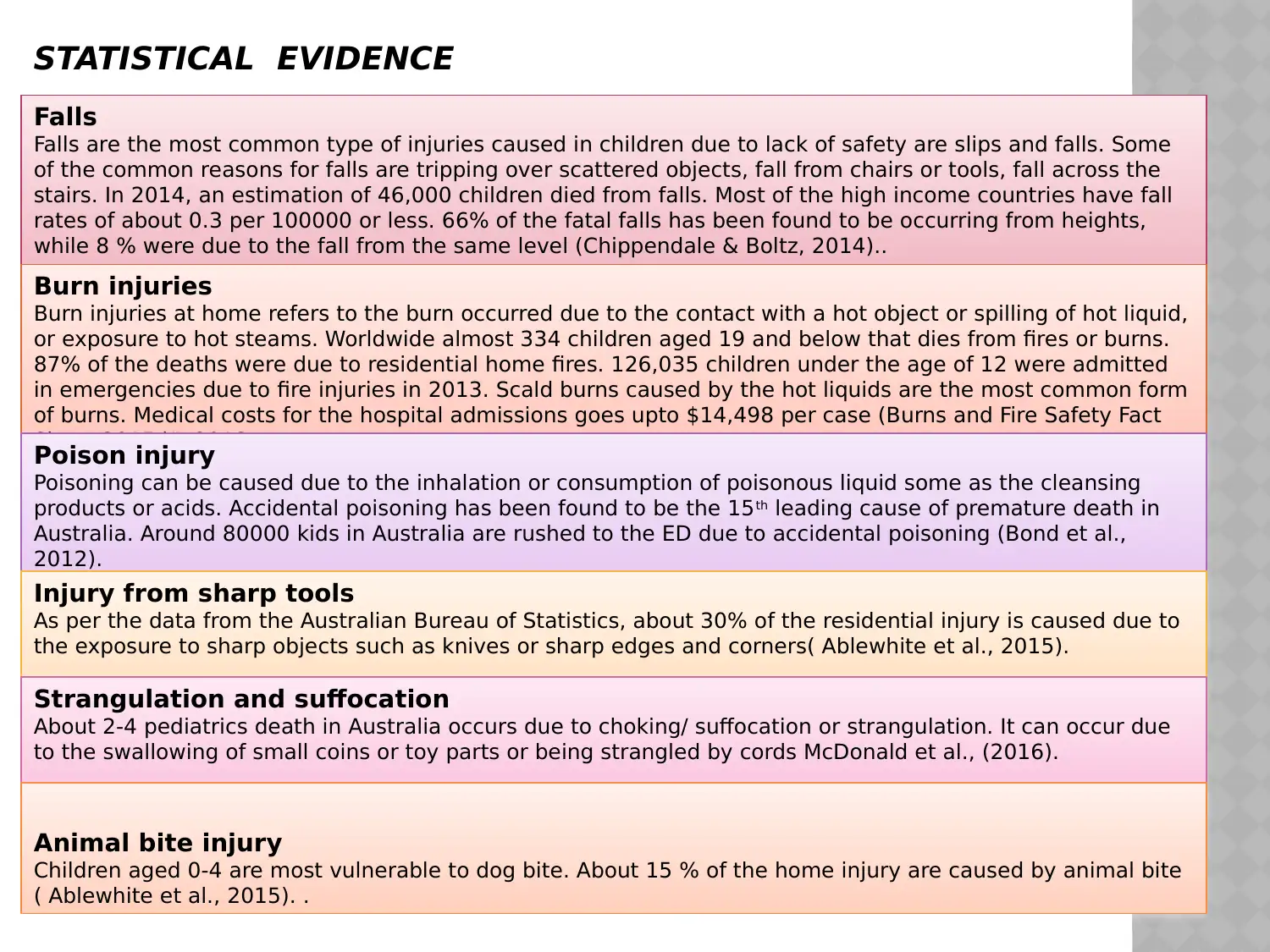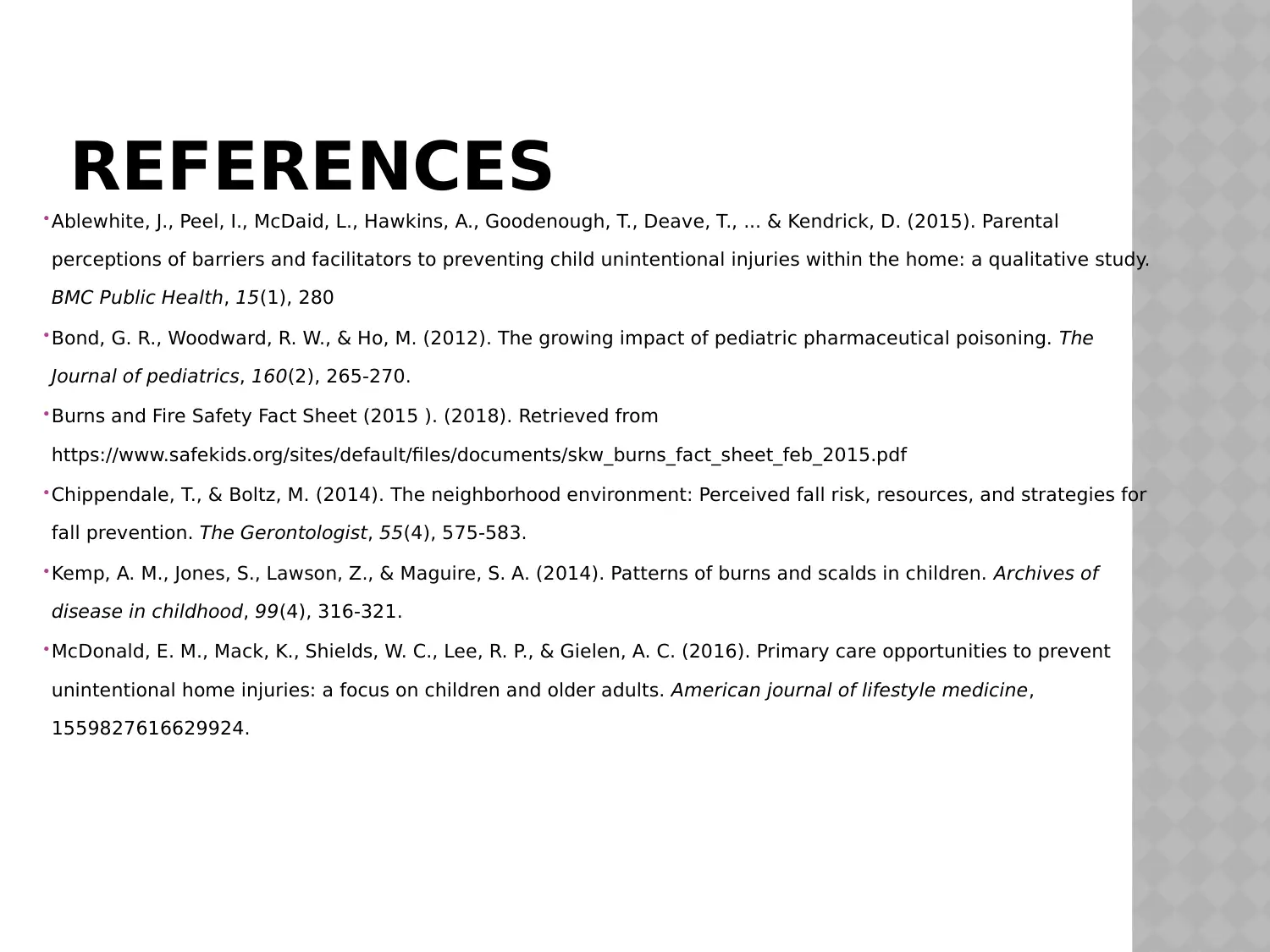Child Home Safety: Analyzing Falls, Burns, Poisoning, and Injury Risks
VerifiedAdded on 2021/06/14
|3
|675
|209
Homework Assignment
AI Summary
This homework assignment provides an overview of home safety hazards for children, focusing on falls, burns, poisoning, sharp tool injuries, strangulation/suffocation, and animal bites. It presents statistical evidence, such as the number of child deaths from falls and burns, and the frequency of poisoning incidents. The assignment highlights the importance of understanding these risks to prevent injuries, referencing data from various sources. The content covers common causes of injuries, including tripping hazards, hot liquids, and exposure to sharp objects. It also examines the vulnerability of young children to dog bites and other home-related dangers. The assignment emphasizes the need for awareness and preventive measures to ensure a safe home environment for children. The provided references offer additional details on each type of injury and strategies for prevention.
1 out of 3










![[object Object]](/_next/static/media/star-bottom.7253800d.svg)